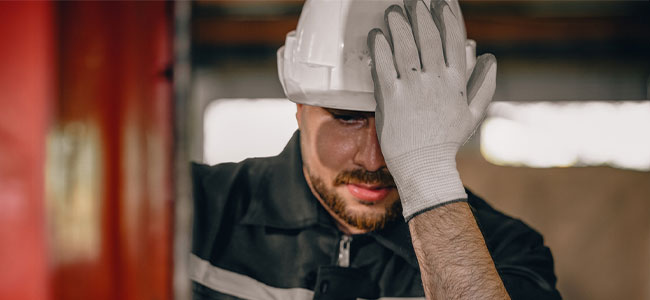
Breaking the Mental Health Stigma in Construction
While there is a mental health crisis occurring both nationally and within the construction industry, the stigma around mental health in construction remains inordinately high.
- By Joe Davies
- Oct 18, 2023
Imagine being on a boat tour of Niagara Falls. At the start of the tour, and from a distance, you have a full view of the falls. They’re powerful and majestic. But as the boat gets closer and closer, slowly and over time you can’t see as much. You’re getting wet, losing sight of what’s around you. You lose perspective. That’s how a mental health crisis can feel. You might not realize how wet you’re getting until you’re right under the falls getting soaked, and by that point, turning around to dry land feels impossible.
Being “in the mist” is a common analogy used to describe someone at risk of having a mental health crisis. Oftentimes, these individuals don’t realize how deep in the storm they are or how heavy it was until they’re on the other side. But if you or one of your workers is experiencing a mental health concern, there’s no reason to face the storm alone, even in the construction industry. It’s important to reach out and get help before a light rain turns into a hurricane.
The Mental Health Stigma in Construction
Although mental health concerns make individuals feel alone, the truth is about 1 in 4 adults experience a diagnosable mental health disorder, including depression and anxiety, in a given year. An even higher percentage experience symptoms without being diagnosed. According to the Centers for Disease Control (CDC), the construction industry has one of the highest rates of suicide compared to other industries. While it’s clear that there is a mental health crisis occurring both nationally and within the construction industry, the stigma around mental health in the construction industry remains inordinately high.
In a survey of construction workers, 78 percent said shame and stigma were the top reasons that workers who need help with mental health may not seek it. It’s often ingrained in the psyche of construction workers to “grin and bear it” when it comes to mental health and even physical health issues. But ignoring them will only make them harder to overcome down the line.
Changing Your Mindset on Mental Health
Breaking the stigma requires changing the collective mindset on mental health. Consider that professional athletes not only have physical therapists and athletic trainers; they also have mental health coaches. It takes more than physical health to win. It requires mental preparation and wellness to overcome obstacles and adversity during a game. A starting quarterback could easily say they’re down by 14 with only 2 minutes left and just give up. But they don’t, and that requires mental resilience.
While athletes undergo a lot of physical and mental strain and pressure on the job, construction workers experience the same demands, if not more, on the construction site. If construction workers are not in the right headspace, it can impact their focus and not only lead to decreased productivity but potentially risky behaviors and safety incidents. For example, a crane operator who isn’t focused on their task could accidentally injure their colleague. Mental health must be treated the same way an athlete would treat a sore back: by working on it before it turns into an injury. An athlete might grin and bear it during a game, but afterward, they make sure to get the help they need to heal and reach their peak performance.
Taking Care of Your Mental Health and Asking for Help
Mental health impacts performance on the job and in all aspects of life. Construction is a tough line of work, and that toughness often carries over into health and wellness. Being aware of one’s emotions is often not seen positively in the construction industry, leading most workers to feel the need to suppress their feelings. This leads to what some may call a “masculine armor” that both male and female construction workers put on. It can be scary to take that armor down and open up, but talking to someone about what’s going on is a small act that can have a big impact on mental health and wellness.
Many of the best construction sites today have onsite care providers who are well-equipped to discuss mental health and well-being. Starting a conversation with an onsite clinician or provider at the job site is a great way to boost mental health awareness. Health practitioners at the job site are there to provide holistic care. Likewise, athletic trainers and nurse practitioners are well-versed in-patient confidentiality and can help talk through different ways to approach some of stressors that might be impacting workers’ health.
With the nature of construction work, health issues are often something that workers don’t want to talk about for fear of losing a job. But that’s what onsite care providers are there for, and the sooner those who need treatment for mental or physical ailments seek it, the sooner the situation will improve. Remember, onsite clinics are judgment-free zones.
Clear Skies Ahead
Asking for help is a big step on a journey toward better mental health. It’s often the biggest hurdle that to overcome to get out of the storm. It doesn’t have to be scary. Just talking to someone is a great place to start, and the conversation can flow from there, ultimately improving the workplace and the safety therein. While some stigma remains in construction, the way the industry and the world approach mental health is evolving at a much faster pace than before the pandemic.
More and more construction employers are embracing the whole health and wellness of workers and establishing supportive work environments. These changes will help reduce the stigma around mental health and bring a greater focus to improving well-being. Remember, there is nothing to lose in reaching out, but it could mean having everything to gain.